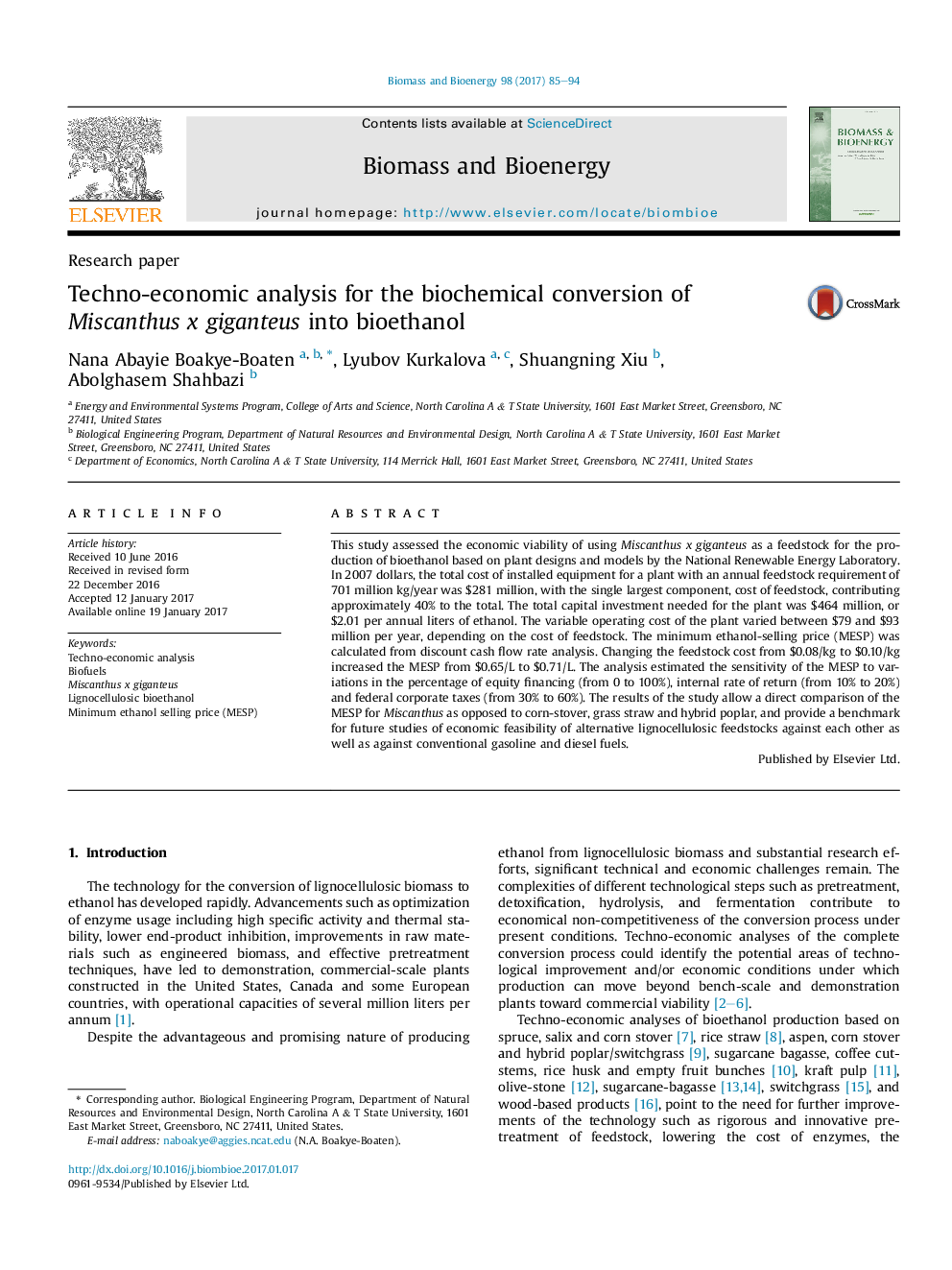| کد مقاله | کد نشریه | سال انتشار | مقاله انگلیسی | نسخه تمام متن |
|---|---|---|---|---|
| 4996305 | 1459795 | 2017 | 10 صفحه PDF | دانلود رایگان |

• Techno-economic analysis was conducted for bioethanol from Miscanthus x giganteus.
• Minimum ethanol selling prices were estimated to range between $0.65/L and $0.71/L.
• 2007 dollars used as baseline for analyses conducted.
• Feedstock price and handling prominently affected minimum ethanol selling price.
• Analyses were based on NREL models.
This study assessed the economic viability of using Miscanthus x giganteus as a feedstock for the production of bioethanol based on plant designs and models by the National Renewable Energy Laboratory. In 2007 dollars, the total cost of installed equipment for a plant with an annual feedstock requirement of 701 million kg/year was $281 million, with the single largest component, cost of feedstock, contributing approximately 40% to the total. The total capital investment needed for the plant was $464 million, or $2.01 per annual liters of ethanol. The variable operating cost of the plant varied between $79 and $93 million per year, depending on the cost of feedstock. The minimum ethanol-selling price (MESP) was calculated from discount cash flow rate analysis. Changing the feedstock cost from $0.08/kg to $0.10/kg increased the MESP from $0.65/L to $0.71/L. The analysis estimated the sensitivity of the MESP to variations in the percentage of equity financing (from 0 to 100%), internal rate of return (from 10% to 20%) and federal corporate taxes (from 30% to 60%). The results of the study allow a direct comparison of the MESP for Miscanthus as opposed to corn-stover, grass straw and hybrid poplar, and provide a benchmark for future studies of economic feasibility of alternative lignocellulosic feedstocks against each other as well as against conventional gasoline and diesel fuels.
Journal: Biomass and Bioenergy - Volume 98, March 2017, Pages 85–94